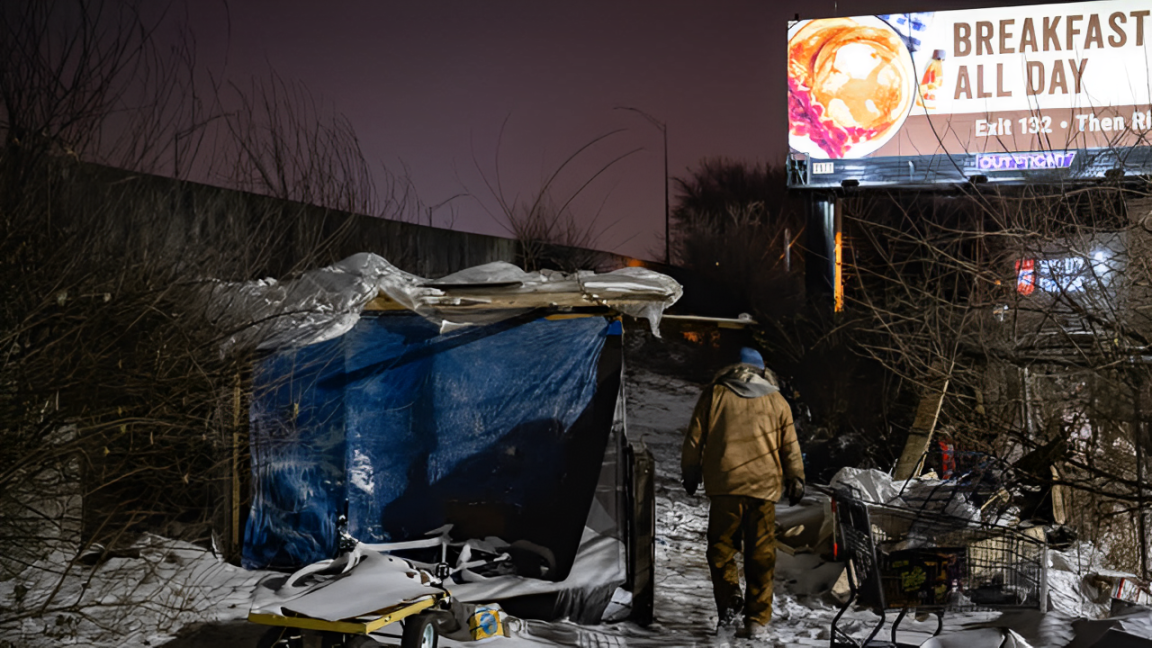Race Day Live When temperatures drop to dangerous levels, Kentucky’s shelters face overwhelming demand. Jessica Lee, who runs a nonprofit in Somerset, often finds herself on the phone with other shelters, trying to find space for people in need.
Sometimes, she has to send them far away to cities like Owensboro or Chattanooga. But not everyone can or wants to leave their hometown, especially if they have jobs or family nearby.
Many choose to camp outside, even though Kentucky has made it illegal to do so without permission. Others take shelter in their cars.
“There’s a huge shortage of emergency shelters,” Lee said. Her nonprofit, Help the Homeless, started by providing backpacks to people experiencing homelessness in 2023.
Now, it’s trying to fill a much bigger need, especially in the winter when freezing temperatures make outdoor living life-threatening.
Advocates across Kentucky share the same concern: while affordable housing is the ultimate solution to homelessness, emergency shelters are essential for immediate help.
Kim Webb, who leads the Emergency Shelter of Northern Kentucky, says it’s frustrating that Kentucky requires animal shelters in every county but has no such rule for shelters for humans.
“Emergency shelters need funding to function,” Webb said. “But the reality is, money is the main hurdle.”
Emergency Shelters Struggle to Meet Demand
This winter, the state has opened hundreds of warming centers in government buildings, churches, and fire stations.
Some cities, like Lexington, have “white flag” programs, which provide extra shelter when temperatures drop below 32°F. However, rural counties often lack similar options, leaving people to travel long distances to find warmth.
In Graves County, a fire department serves as a warming center, but it’s 20 minutes from the county seat, making it hard for some to reach. Cassy Dasham, who works with a nonprofit called Camp Graves, says temporary warming centers are helpful but inconsistent.
“If people don’t know when or where they’ll be open, it’s hard for them to get there,” she explained. Dasham believes rural areas need permanent, low-barrier shelters that are always open and help people transition to stable housing.
Kentucky’s Shelter Crisis Worsens
According to the National Alliance to End Homelessness, Kentucky needs at least 1,300 more shelter beds to meet current demand.
Data from the U.S. Department of Housing and Urban Development (HUD) shows that the number of unsheltered homeless people in Kentucky grew from 1,470 in 2023 to 1,716 in 2024. Many believe these figures underestimate the true scale of the problem.
Adding to the crisis is a law passed in 2023 that bans street camping without permission. Critics argue that it criminalizes homelessness, making life even harder for those with nowhere to go.
Although the law allows local governments to designate camping areas, few have done so. It also exempts people from sleeping in cars, but this doesn’t address the larger issue: the lack of shelter.
Dasham questioned the fairness of punishing people for being homeless when shelters aren’t available to prevent the so-called crime.
Read More:
- 16-Year-Old Florida Girl Recovers from Crash That Claimed Her Father’s Life
- Facebook Group Connects Women to Spot Red Flags in Maine, New Hampshire, and Massachusetts
Funding Gaps and Long-Term Solutions
Lexington has tried to address the issue by coordinating with local organizations to expand shelter space. The city even rented motel rooms to add 190 beds this winter.
However, Jeff Herron, Lexington’s homelessness prevention manager, says federal funding hasn’t kept up with the rising need, and the city receives no state money for homelessness services.
“Local governments are left to find solutions and funding,” Herron said. “You need a safety net, especially during extreme weather.”
Ginny Ramsey, who runs the Catholic Action Center in Lexington, says her nonprofit had to pay for additional hotel rooms because even the expanded shelters weren’t enough. “We can’t sit back and let people freeze to death,” she said.
Federal funds, like the $30 million Kentucky received from HUD last year, are spread thin across various programs, including rental assistance and street outreach. Operating shelters professionally is expensive, requiring trained staff and high overhead costs.
Advocates say Kentucky can look to states like West Virginia, which use their funds to support shelter operations.
But shelters are only part of the solution. As Kenzie Strubank from the Kentucky Housing Corporation pointed out, “The only way to end homelessness is housing. Shelters are just the first stop.”
With winter weather intensifying and demand for shelter growing, Kentucky must find sustainable solutions to protect its most vulnerable residents. Until then, nonprofits and local governments are left scrambling to fill the gaps, one cold night at a time.
Disclaimer- Our team has thoroughly fact-checked this article to ensure its accuracy and maintain its credibility. We are committed to providing honest and reliable content for our readers.

